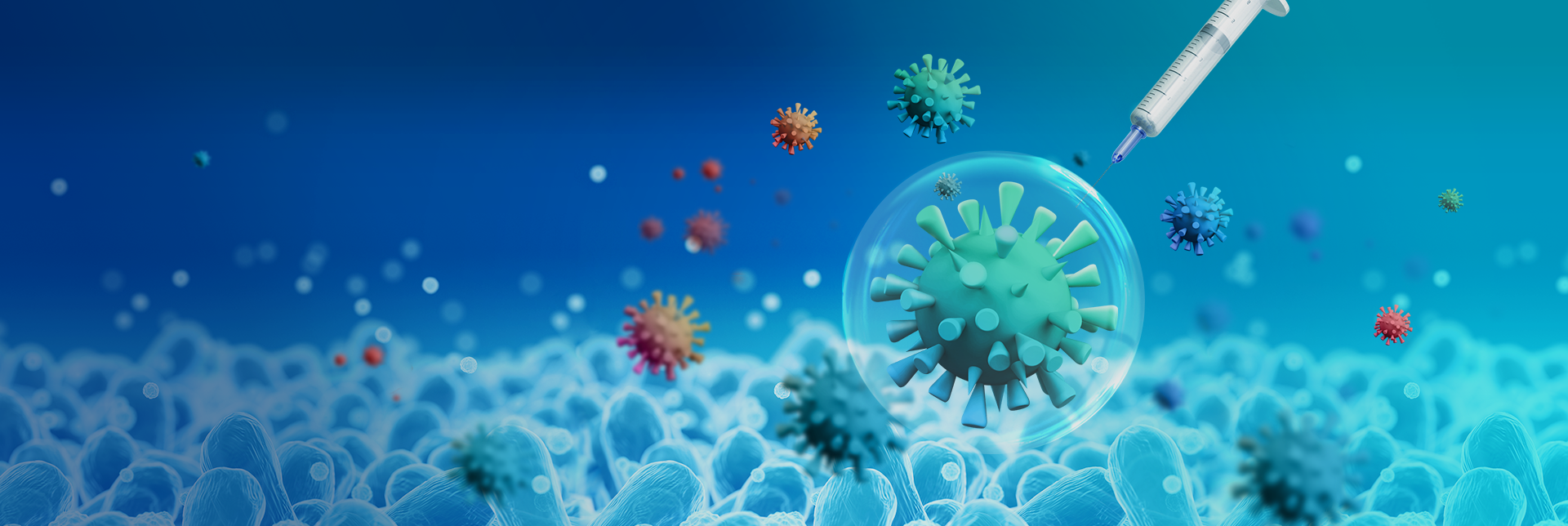
Developing vaccines for neglected and emerging infectious diseases
Since the last decades, our world has seen a great rise in the number of infectious diseases, especially the zoonosis diseases such as Ebola, Marburg, hemorrhagic fevers, Lassa fever, dengue, yellow fever, Zika, SARS, MERS, and now COVID-19. These diseases are generally caused by bacteria, viruses, parasites, or fungi that jump from animals to humans directly or indirectly. These emerging infectious diseases cause harm not only to the population’s health but also damage the overall economy, cause international tensions, threaten biodefense, undermine future plans, strain resources and disrupt the balance of everyday life. Vaccination plays an important role in helping humans fight against these viruses. Vaccines are biological preparations that enhance immunity to a specific disease and are one of the most cost-effective investments in health and economic growth. Immunization can help people escape the pain and death that come with infectious diseases. It also allows countries to devote money to pandemic preparedness and health system strengthening.
Vaccine firms had begun investigating the use of these emerging innovations for other diseases well before the COVID-19 pandemic. Companies are now designing COVID-19 mRNA vaccines that are thermostable, single-dose, or administered nasally to help solve delivery challenges—features that may be useful in vaccines for other diseases. And, since the same production facility can be used to make RNA for a variety of diseases, manufacturing can be simplified. Despite this, the chances of success against diseases like HIV, malaria, and tuberculosis (TB) are uncertain, partially due to the ways in which these pathogens can evade the immune system.
Vaccination has played a critical role in reducing morbidity and mortality from debilitating infectious diseases, resulting in epidemic eradication and overall reductions in infectious disease burdens, as shown by historical records. Vaccines are a valuable way of avoiding infections, particularly when therapeutic alternatives are available, and they reflect a long-awaited achievement. Even with international cooperation, delivering a vaccine to the population takes time, and side effects, dosing issues, and manufacturing issues can all trigger delays. As a result, we must handle our time carefully. In general, traditional strategies may raise some concerns in the case of newly emerging infectious diseases.
Given their epidemic potential, the World Health Organization (WHO) and the National Institute of Allergy and Infectious Diseases (NIAID) released a list of pathogens that should be prioritized for research and development. This non-exhaustive list includes viruses, bacteria, protozoa, and fungi that cause diseases for which there are no effective countermeasures or for which new therapeutics are needed. Urbanization, globalization, international tourism, foreign trade, aging, and climate change have all played a role in favoring the rise, spread, and dissemination of these infectious diseases. Human-to-human contact is increasing, the number of travelers and their movements is increasing, the elderly population is more vulnerable to infections, and the spatial distribution of pathogens within a previously endemic zone is shifting.



















